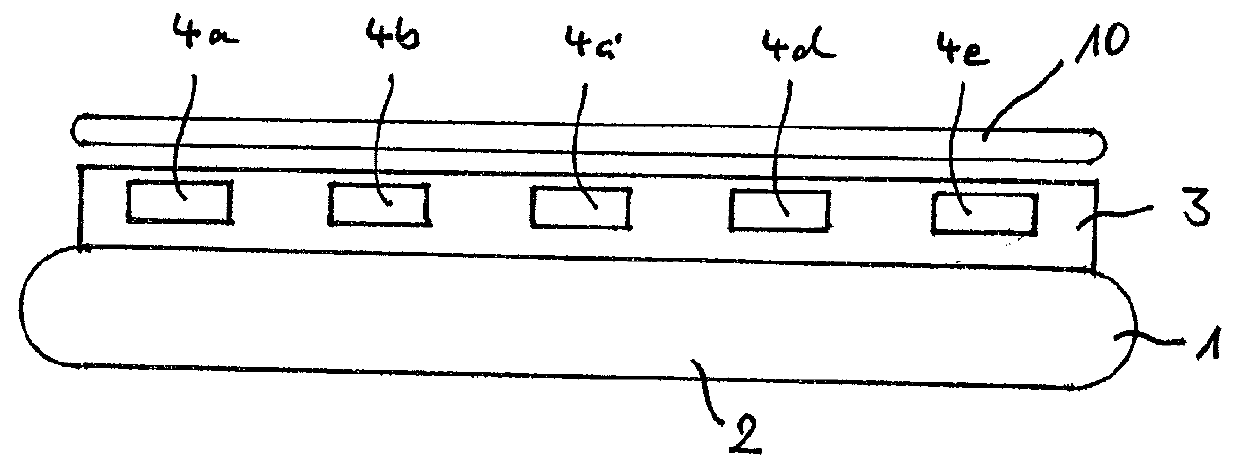Carrier wafer, method for holding a flexible substrate and method for the manufacture of a carrier wafer
a carrier wafer and flexible technology, applied in the direction of solid-state device manufacturing, electric devices, solid-state devices, etc., can solve the problems of bending under the weight and inertia of the substrate, affecting the production efficiency of the substrate, so as to avoid unnecessary repetition and improve the effect of invention
- Summary
- Abstract
- Description
- Claims
- Application Information
AI Technical Summary
Benefits of technology
Problems solved by technology
Method used
Image
Examples
Embodiment Construction
[0050]FIG. 1 shows a cross-section through a carrier wafer 1. This carrier wafer 1 has a substrate 2 on which an insulating layer 3 is located and embedded in the insulating layer 3 are electrodes 4a to 4e which are electrically insulated on all sides by the insulating layer 3. Electrodes of this type insulated on all sides are also called floating electrodes. They have no defined potential.
[0051]According to the invention, to hold a utilizable wafer 10, the floating electrodes 4a to 4e are charged with electrical charge carriers. For a unipolar carrier wafer 1 this charge can be delivered by means of identical charge carriers, e.g. only with electrons. For a bipolar carrier wafer, the floating electrodes located next to one another can be charged with charge carriers of different polarity, e.g. the floating electrodes 4a, 4c and 4e can be charged with electrons and the floating electrodes 4b and 4d can be charged with holes.
[0052]The floating electrodes 4a to 4e charged in this man...
PUM
 Login to View More
Login to View More Abstract
Description
Claims
Application Information
 Login to View More
Login to View More - Generate Ideas
- Intellectual Property
- Life Sciences
- Materials
- Tech Scout
- Unparalleled Data Quality
- Higher Quality Content
- 60% Fewer Hallucinations
Browse by: Latest US Patents, China's latest patents, Technical Efficacy Thesaurus, Application Domain, Technology Topic, Popular Technical Reports.
© 2025 PatSnap. All rights reserved.Legal|Privacy policy|Modern Slavery Act Transparency Statement|Sitemap|About US| Contact US: help@patsnap.com



